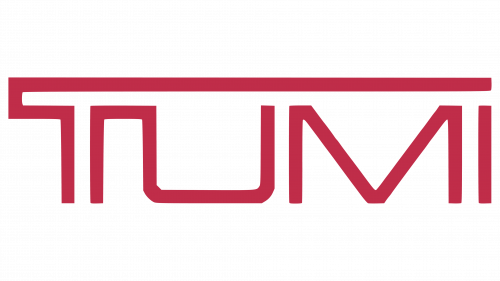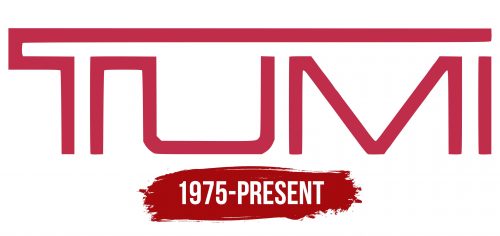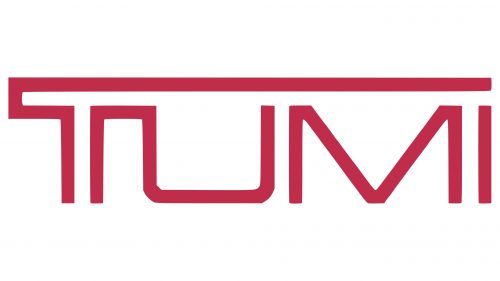The Tumi logo reflects the company’s commitment to the quality of its products. Every stroke is like a masterpiece of craftsmanship, resulting in excellent creations. The emblem is proof of attention to detail and showcases the perfection of their luggage, suitcases, and other signature products.
Tumi: Brand overview
A former Peace Corps volunteer, Charlie Clifford, started Tumi in 1975 in New Jersey, USA. This marked the beginning of the company’s existence. After serving in Peru, Clifford became interested in South American culture, leading him to choose “Tumi” in honor of the Peruvian sun god.
The company’s initial focus was importing leather items from South America. Its first offerings were briefcases and leather bags, distinguished by their exquisite workmanship and style.
The company debuted its first luggage line in 1983, using ballistic nylon, a robust material created for military applications. This breakthrough marked a sea change for the firm, as ballistic nylon proved ideal for robust and fashionable travel bags.
The 1980s saw significant expansion. The business started adding other product lines, such as business cases and travel accessories, to its lineup. It also expanded its distribution network, forming alliances with high-end department stores and specialized luggage sellers.
The 1990s brought continued expansion into foreign markets. After establishing its first foreign offices, the company began marketing its goods in Europe and Asia. It also began experimenting with novel materials and technologies to enhance product usefulness and longevity.
A key turning point was the introduction of the first range of soft luggage in 1994. This broadened the product offering, attracting customers and solidifying its industry position.
Doughty Hanson & Co., an investment firm, purchased the company in 2004. With this acquisition, the business gained more resources for expansion and improvement.
The debut of the first women’s collection in 2007 was noteworthy. This line of luggage and accessories was designed with female travelers’ needs in mind.
The company went public in 2012, listing its stock on the New York Stock Exchange. This IPO provided additional funds for growth and innovation.
The Tegra-Lite® series was introduced in 2013 and constructed using Tegris®, a new material offering remarkable strength at a low weight.
A significant development occurred in 2016 when Samsonite International S.A. acquired the company for $1.8 billion. This transaction made the firm a division of Samsonite, one of the biggest luggage producers in the world.
Travelers could now trace their luggage in real-time with the introduction of the Global Locator in 2017.
The first collection of recycled materials was unveiled in 2018, showcasing the company’s dedication to sustainable development.
The range of electronic accessories, including adapters and chargers made especially for travelers, grew in 2019.
Innovation continued in 2020 with the unveiling of the 19 Degree Aluminum collection. This range combined cutting-edge technology with sophisticated design, featuring high-strength aluminum construction for improved content protection and a distinctive textured surface.
The electronic accessory market grew in 2021 with the introduction of the “Connected” range. This included portable chargers and intelligent luggage tags designed to meet the growing demand for technological travel aids that ensure convenience and security.
2023 was marked by global outreach expansion, with new flagship stores opening in major Asian and European locations, including Tokyo, Seoul, and Paris. These stores featured cutting-edge retail concepts incorporating digital technologies to enhance the shopping experience.
In 2024, a new product range was unveiled for the upcoming generation of business travelers. The “Alpha Flex” line included modular suitcases and bags designed to be easily modified and adjusted to different uses, reflecting an understanding of the evolving needs of contemporary professionals.
The company continued to thrive in the travel and fashion sectors, maintaining its commitment to high-quality travel accessories.
Meaning and History
What is Tumi?
It is a premium American brand known for quality luggage, bags, and travel accessories. The company offers a range of products, including suitcases, backpacks, briefcases, travel kits, and other accessories designed for business and leisure travelers. The brand is recognized for its durable materials, innovative design, and functional features such as multi-functional compartments and built-in charging ports. The products utilize advanced technology and quality materials such as ballistic nylon for durability and performance. The company offers stylish and practical travel solutions that enhance customers’ travel experience.
1975 – today
The core element of the Tumi logo is a distinctive term taken from Peruvian national traditions. It refers to a ceremonial knife once used in sacred sacrifices. The inscription features a unique shape and essentially represents a drawn element. This interesting blend of text and graphics is original, creating a unique symbol.
The logo consists solely of the name. This format is intentional because a small logo with minimal details effectively becomes a trademark that the manufacturer thoughtfully uses to label each bag. It functions not only as an official symbol but also as an individual mark and sign. Through it, the American company confirms the authenticity of its products and highlights their original origin.
The inscription is created with a custom font – geometric, bold, chiseled, and strict. All letters are uppercase, slightly flattened at the top and bottom, giving them a wide appearance. This is particularly noticeable with the “M,” which occupies a lot of space, while other glyphs are narrower in comparison. For example, the minimalist “I” looks like a single column. However, two other characters are connected and form parts of each other:
- The “T” consists of two curved lines (the left line forms the upper part of the letter, and the right one forms the lower part).
- The “U” is formed from a single line of complex configuration (it has a bracket shape).
The longest stroke in the “T” is its top, extending far to the right and encompassing the entire inscription. This graphic technique conveys a sense of care and protection, fitting well with the luxury brand’s concept. Meanwhile, the “U” and part of the adjacent letter’s leg resemble a backward “2.” Most glyphs have 90-degree angles, so the emblem looks strict, showing that the company approaches the production of bags and suitcases with a businesslike attitude, adhering to all technological standards.
The logo also skillfully uses negative space. On closer inspection, one can see two “T” s: one outlined, formed by parallel red lines, and the other, white, positioned between them. The other glyphs are red, without a double structure.
The contrasting colors are chosen due to their brightness and pleasant charm, which does not occur when combined with black. Red and white, on the other hand, evoke positive feelings without internal tension and emotional strain. They reflect the luxury travel bags and suitcases brand’s confidence, openness, friendliness, and approachability.






